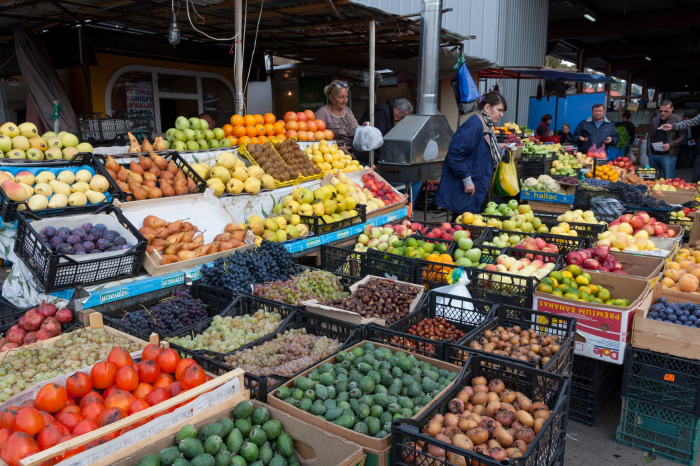Inflation in Georgia is still at an exorbitant level - new statistics

Over the year, food prices have increased by 17%, transport and utilities have also risen in price.
Annual inflation (November 2021 to November 2020) in Georgia was 12.5%, with a target of 3%, according to the National Statistics Service "Sakstat" (Gruzstat).
During the year, prices increased for transport (20.2%), utilities (11.5%), hotels and restaurants (10.9%) and healthcare (8.5%). In November, food prices increased by 17% over the year. Vegetable oil rose the most - 27.7%, vegetables - 26.2%, bread and bread products - 20.4%, milk and eggs - 17.9%, sugar - 15.5%.
In November 2021, compared to October 2021, the inflation rate was 0.6%. In October, monthly inflation was 1.3%.
What influences the price dynamics in Georgia
According to the National Bank of Georgia, the coronavirus pandemic has put the world economy in many difficulties and one of the important factors in this regard is the trend of accelerated price growth, which has recently remained a problem in both developed and developing countries.
In November, world prices for basic food increased by 1.2% (primarily due to grain, sugar and dairy products) and reached a new historical maximum since July 2011, according to a press release from the Food and Agriculture Organization of the United Nations (FAO).
The forecast for the inflation rate is still disappointing
According to the National Bank, inflation will remain high until the end of the year.
"In December of this year and January-February of next year, annual inflation will increase even more due to the effect of the growth of utility subsidies," the regulator said in a statement.
The document notes that, all other things being equal, the current forecast assumes a decrease in inflation from the spring of 2022, which, together with the adoption of temporary factors, will be supported by the existing tight monetary policy and fiscal consolidation.
However, in the face of strong supply shocks, the threat of rising inflation expectations is still relevant. However, inflationary risks remain, and their implementation may lead to further tightening of monetary policy.
Source sputnik-georgia.ru
Tags:
Inflation in Georgia is still at an exorbitant level - new statistics

Over the year, food prices have increased by 17%, transport and utilities have also risen in price.
Annual inflation (November 2021 to November 2020) in Georgia was 12.5%, with a target of 3%, according to the National Statistics Service "Sakstat" (Gruzstat).
During the year, prices increased for transport (20.2%), utilities (11.5%), hotels and restaurants (10.9%) and healthcare (8.5%). In November, food prices increased by 17% over the year. Vegetable oil rose the most - 27.7%, vegetables - 26.2%, bread and bread products - 20.4%, milk and eggs - 17.9%, sugar - 15.5%.
In November 2021, compared to October 2021, the inflation rate was 0.6%. In October, monthly inflation was 1.3%.
What influences the price dynamics in Georgia
According to the National Bank of Georgia, the coronavirus pandemic has put the world economy in many difficulties and one of the important factors in this regard is the trend of accelerated price growth, which has recently remained a problem in both developed and developing countries.
In November, world prices for basic food increased by 1.2% (primarily due to grain, sugar and dairy products) and reached a new historical maximum since July 2011, according to a press release from the Food and Agriculture Organization of the United Nations (FAO).
The forecast for the inflation rate is still disappointing
According to the National Bank, inflation will remain high until the end of the year.
"In December of this year and January-February of next year, annual inflation will increase even more due to the effect of the growth of utility subsidies," the regulator said in a statement.
The document notes that, all other things being equal, the current forecast assumes a decrease in inflation from the spring of 2022, which, together with the adoption of temporary factors, will be supported by the existing tight monetary policy and fiscal consolidation.
However, in the face of strong supply shocks, the threat of rising inflation expectations is still relevant. However, inflationary risks remain, and their implementation may lead to further tightening of monetary policy.
Source sputnik-georgia.ru
Tags:

























